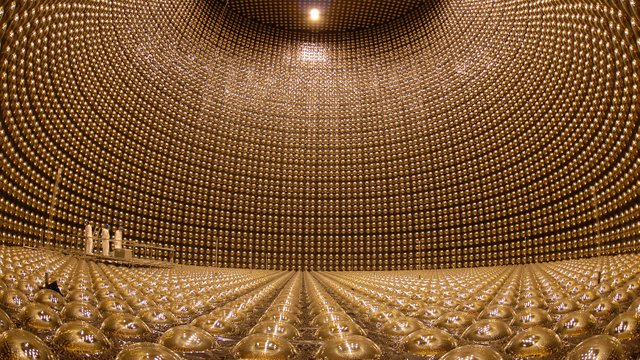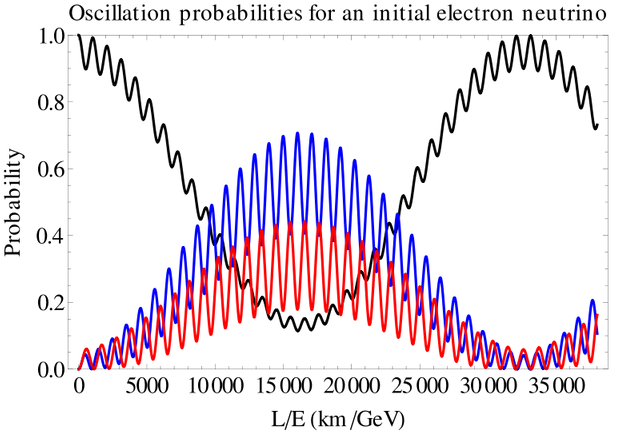Neutrino beam experiments may give answers to Matter-Antimatter Asymmetry in the Universe
(Graphic 1: Each of these bulbs is a photodetector!)
Recent results from the T2K experiment with neutrinos and antineutrinos may explain why matter dominates over antimatter in the formation of the universe.
(Graphic 2: Each point here represents a photodetector that has detected light)
Neutrinos and anti-neutrinos are elusive particles, interacting with other particles only via the weak force and gravitational force. Yet, scientists at the T2K experiment have managed to find an asymmetry between matter and antimatter. In more technical terms, the asymmetry is found to a 2-sigma level - i.e. "confirmed to a 95% probability".
The asymmetry arises in neutrino oscillations. Neutrino oscillations is the phenomenon whereby electron-neutrinos will transform into muon-neutrinos/tau-neutrinos and vice versa over spacetime. For example, if we start out with an electron-neutrino, its state will vary following a pattern like the graph below:
(Graphic 3: Graph of electron neutrino oscillation)
Neutrino oscillation occurs as their weak eigenstate is not equal to their mass eigenstate. Thus a neutrino produced under some weak eigenstate can be measured as a different weak eigenstate after travelling some distance as a mass eigenstate. This mixing is described by the PMNS matrix. The T2K experiment finds that the neutrino oscillation rate and probability differs for neutrinos and anti-neutrinos. It's a small effect, but nonetheless 2-sigma above the noise level.
References
- Abe, K., Amey, J., Andreopoulos, C., Antonova, M., Aoki, S., Ariga, A., ... & Barr, G. (2017). Combined analysis of neutrino and antineutrino oscillations at T2K. Physical Review Letters, 118(15), 151801.
- Abe, K., Amey, J., Andreopoulos, C., Antonova, M., Aoki, S., Ariga, A., ... & Barker, G. J. (2017). Updated T2K measurements of muon neutrino and antineutrino disappearance using 1.5× 1 0 21 protons on target. Physical Review D, 96(1), 011102.
- Abe, K., Abgrall, N., Aihara, H., Akiri, T., Albert, J. B., Andreopoulos, C., ... & Autiero, D. (2013). T2K neutrino flux prediction. Physical Review D, 87(1), 012001.
- Maki, Z., Nakagawa, M., & Sakata, S. (1962). Remarks on the unified model of elementary particles. Progress of Theoretical Physics, 28(5), 870-880.
- Pontecorvo, B. (1958). INVERSE BETA PROCESSES AND NONCONSERVATION OF LEPTON CHARGE. Zhur. Eksptl'. i Teoret. Fiz., 34.
- en.wikipedia.org/wiki/Neutrino_oscillation



Congratulations @frostfractal! You have completed some achievement on Steemit and have been rewarded with new badge(s) :
Click on any badge to view your own Board of Honor on SteemitBoard.
For more information about SteemitBoard, click here
If you no longer want to receive notifications, reply to this comment with the word
STOPCongratulations @frostfractal! You have completed some achievement on Steemit and have been rewarded with new badge(s) :
Click on any badge to view your own Board of Honor on SteemitBoard.
For more information about SteemitBoard, click here
If you no longer want to receive notifications, reply to this comment with the word
STOP